Preface
Contents
Part I Outline
1 Introduction
2 Abstracts
Part II Sensors and Actuators
3 New Concepts for Distributed Actuators and Their Control
3.1 Introduction
3.2 Shape Memory Alloys as Flexible Actuators
3.2.1 Basics
3.2.2 Control Design
3.2.3 Structural Integration
3.3 Control and Feedback Control of Distributed Actuators
3.4 Conclusions and Outlook
3.5 References
4 Artificial Muscles, Made of Dielectric Elastomer Actuators A Promising Solution for Inherently Compliant Future Robots
4.1 Drawbacks of Prevailing Robotic Actuators
4.2 Benefits of DEAs in Soft Robotics
4.2.1 Capability of Energy Recuperation
4.2.2 Intrinsic Compliance and Adaptability
4.2.3 Outstanding Power-to-Weight Ratio
4.2.4 Capability of Self-sensing
4.2.5 Noiseless Actuation
4.3 Current Research Efforts
4.3.1 Manufacturing Artificial Muscles Based on DEA
4.3.2 Lightweight Power Electronics
4.4 Summary and Future Challenges
4.5 References
5 Musculoskeletal Robots and Wearable Devices on the Basis of Cable-driven Actuators
5.1 Introduction
5.2 Short State of the Art: From Musculoskeletal Robots to Wearable Devices
5.3 The Myorobotics Toolkit
5.3.1 Overview
5.3.2 Design Primitives Library (DPL)
5.4 Wearable Cable-Driven Robots
5.4.1 Requirements and Structure of a Body Worn Lifting Aid
5.4.2 Body Worn Lifting Aid
5.5 References
6 Capacitive Tactile Proximity Sensing: From Signal Processing to Applications in Manipulation and Safe Human-Robot Interaction
6.1 Introduction
6.2 Signal Processing and Feature Extraction
6.2.1 Tracking
6.2.2 Task and Environment Contexts for Feature Extraction
6.3 Applications
6.3.1 Proximity Servoing
6.3.2 Preshaping
6.3.3 Combined Haptic and Proximity-Based Exploration
6.4 Conclusions and Future Work
6.5 References
Part III Modeling, Simulation and Control
7 Perception of Deformable Objects and Compliant Manipulation for Service Robots
7.1 Introduction
7.2 Compliant Control for Service Robots
7.2.1 Compliant Task-Space Control
7.2.2 Applications of Compliant Control in Everyday Environments
7.2.3 Public Demonstrations
7.3 Object Manipulation Skill Transfer
7.3.1 Efficient RGB-D Deformable Registration
7.3.2 Skill Transfer through Shape Matching
7.3.3 Results
7.4 Conclusions
7.5 References
8 Soft Robot Control with a Behaviour-Based Architecture
8.1 Introduction
8.2 The Behaviour-based Architecture iB2C
8.2.1 Design of Complex Behaviour Networks
8.2.2 Oscillation Detection in Behaviour Networks
8.2.3 Verification of Behaviour Networks
8.3 Soft Control with the iB2C
8.4 Conclusion and Future Work
8.5 References
9 Optimal Exploitation of Soft-Robot Dynamics
9.1 Introduction
9.2 Problem Formulation
9.3 Optimal Controls for Constrained Deflection
9.4 Experiments
9.5 Conclusion
9.6 References
10 Simulation Technology for Soft Robotics Applications
10.1 Introduction
10.2 State of the Art
10.2.1 Simulation in “Classical” Robotics
10.2.2 Simulation in Soft Robotics
10.3 The Basic Concepts of eRobotics
10.3.1 3D Simulation-Based Development
10.3.2 The Virtual Testbed Approach
10.4 Integrating Simulation Algorithms
10.4.1 Multi-Domain Modeling with Bond Graphs
10.4.2 Multi-Domain Modeling by Integrating Single-Domain Tools
10.5 Simulation of Actuated and Controlled Manipulators
10.5.1 Simulation of Compliant Robots
10.5.2 Generation of a Compliant Trajectory
10.5.3 Torque-Based Tracking of the Compliant Trajectory
10.5.4 Drive Train Modeling and Simulation
10.5.5 Torque Control
10.6 Applications
10.6.1 FESTO Bionic Handling Assistant
10.6.2 Soft Physical Human Robot Interaction
10.6.3 Terramechanics
10.7 Conclusions and Outlook
10.8 References
11 Concepts of Softness for Legged Locomotion and Their Assessment
11.1 Biomechanics of Legged Locomotion
11.2 Legged Locomotion in Robotics
11.3 Biomechanical Concepts for Legged Locomotion
11.4 Radial and Tangential Leg Function
11.5 Leg Segmentation and Multi-Joint Structures
11.6 From Biomechanical Concepts to Robots
11.7 Assessment of Locomotor Function in Biomechanics and Robotics
11.8 Outlook
11.9 References
12 Mechanics and Thermodynamics of Biological Muscle A Simple Model Approach
12.1 The Biological Muscle Drives the Animal Motion
12.2 The Biological Muscle’s Various Design Features
12.2.1 The Biological Muscle’s Passive Mechanic Characteristics
12.2.2 Active Muscle and Stability
12.2.3 Mechanical Efficiency and Thermodynamic Enthalpy Rate
12.3 Designing a Technical Actuator from the Biological Prototype
12.4 Next Generation of Bio-inspired and Bio-like Actuators
12.5 References
Part IV Materials, Design and Manufacturing
13 Nanostructured Materials for Soft Robotics – Sensors and Actuators
13.1 Introduction
13.2 Actuators
13.3 Touch Sensors
13.4 Conclusions and Perspectives
13.5 References
14 Fibrous Materials and Textiles for Soft Robotics
14.1 Introduction
14.2 Fibrous Materials: Properties and Architecture
14.3 Functionalization Made Possible by New Textile Processing Technologies
14.4 Light-Weight-Structures for Robots
14.5 Adaptive and Intelligent Structures
14.6 Soft Robot Surface Design and Surface Functionalization
14.7 Conclusion
15 Opportunities and Challenges for the Design of Inherently Safe Robots
15.1 Introduction
15.2 State of the Art in Soft Robotics
15.3 Design of Soft Robots with Variable Stiffness
15.4 Concepts
15.5 Summary and Outlook
15.6 References
16 Aspects of Human Engineering – Bio-optimized Design of Wearable Machines
16.1 Introduction
16.1.1 The Challenge
16.1.2 Prevalence
16.2 Designing a Wearable Robot: State of the Art
16.2.1 Different Types of Exoskeletons
16.2.2 Power and Drives
16.2.3 Detection of User Intention
16.2.4 Human Anatomy
16.3 Therapy and Rehabilitation
16.4 Physical Prevention and Force Assistance
16.5 Vision: Auxiliary Assistance
16.6 References
17 3D Printed Objects and Components Enabling Next Generation of True Soft Robotics
17.1 Introduction
17.1.1 Additive Manufacturing (AM) as a Manufacturing Technology forSoft-Robotic-Systems
17.1.2 The Production Processes
17.1.3 The Term Robot and its Newly Added Additive Components
17.1.4 Integrated Functional Components
17.1.5 Soft Actuator Systems
17.1.6 Fabrication of Soft Objects Including Endless Fibers
17.2 Discussion and Outlook
17.3 References
Part V Soft Robotic Applications
18 Soft Hands for Reliable Grasping Strategies
18.1 Introduction
18.2 Exploiting Constraints
18.3 Requirements to Hardware
18.4 PneuFlex Actuators
18.5 Anthropomorphic Soft Hand Prototype
18.6 Example Implementation of a Grasping Strategy
18.7 Used Interactions
18.8 Limitations
18.9 Discussion
18.10 References
19 Task-specific Design of Tubular Continuum Robots for Surgical Applications
19.1 Introduction
19.2 Continuum Robots with Tubular Structure
19.2.1 Kinematic Structure
19.2.2 Kinematic Modelling
19.2.3 Component Tube Parameters
19.3 Task-specific Design
19.3.1 Design Heuristics
19.4 Computational Design Optimization
19.5 Discussion and Outlook
19.6 References
20 Soft Robotics with Variable Stiffness Actuators: Tough Robots for Soft Human Robot Interaction
20.1 Introduction
20.2 Compliant Actuation
20.2.1 Floating Spring Joint (FSJ)
20.2.2 Flexible Antagonistic Spring Element (FAS)
20.2.3 Bidirectional Antagonism with Variable Stiffness (BAVS)
20.3 Electronics and System Architecture
20.4 Hand Design and Control
20.5 Modeling Soft Robots
20.6 Cartesian Stiffness Control
20.6.1 Cartesian Impedance Control
20.6.2 Independent Position and Stiffness Control
20.7 Optimal Control
20.8 Collision Detection and Reaction
20.8.1 Reactions
20.8.2 Reflexes
20.9 Cyclic Motion Control
20.10 Conclusion
20.11 References
21 Soft Robotics Research, Challenges, and Innovation Potential, Through Showcases
21.1 Introduction: The Need for Soft Robots
21.2 The Challenges for Soft Robotics, Through the Octopus Showcase
21.2.1 Biological Insights
21.2.2 Soft Actuation Technologies
21.2.3 Soft Robot Modeling and Control
21.2.4 Integration and Validation of an Octopus-like Robot
21.3 Soft Robots at Work
21.3.1 Biomedical Applications of Soft Robotics: Octopus-derived Technologies in Surgery
21.3.2 Soft Robots in Explorations: An Octopus-like Underwater Robot
21.3.3 Soft Grippers for Manufacturing
21.4 Conclusions
21.5 References
22 Flexible Robot for Laser Phonomicrosurgery
22.1 Introduction
22.2 Phonomicrosurgery
22.3 System Design
22.3.1 Design Specifications and Constraints
22.3.2 Flexible Sections, Actuation Unit, and Control
22.4 Results
22.5 Conclusions
22.6 References
23 Soft Components for Soft Robots
23.1 Introduction: What Kind of Softness?
23.2 Actuators for Soft Robots
23.2.1 Actuators for Multi-DoF Designs
23.2.2 Pneumatic Artificial Muscles (PAMs)
23.2.3 Smart Material-Based Actuators
23.3 Soft Sensors
23.3.1 Soft Geometry for “Hard” Conductor
23.3.2 Conductive Material
23.3.3 Discrete Sensors in Soft Matrix for Distributed Sensing
23.4 Conclusions
23.5 References
24 Soft Robotics for Bio-mimicry of Esophageal Swallowing
24.1 Introduction
24.2 Interdisciplinary Specifications
24.3 Actuator Design and Manufacture
24.4 Experimental Characterization
24.4.1 Manometry Method and Findings
24.4.2 Articulography Method and Findings
24.5 Discussion and Conclusion
24.6 References
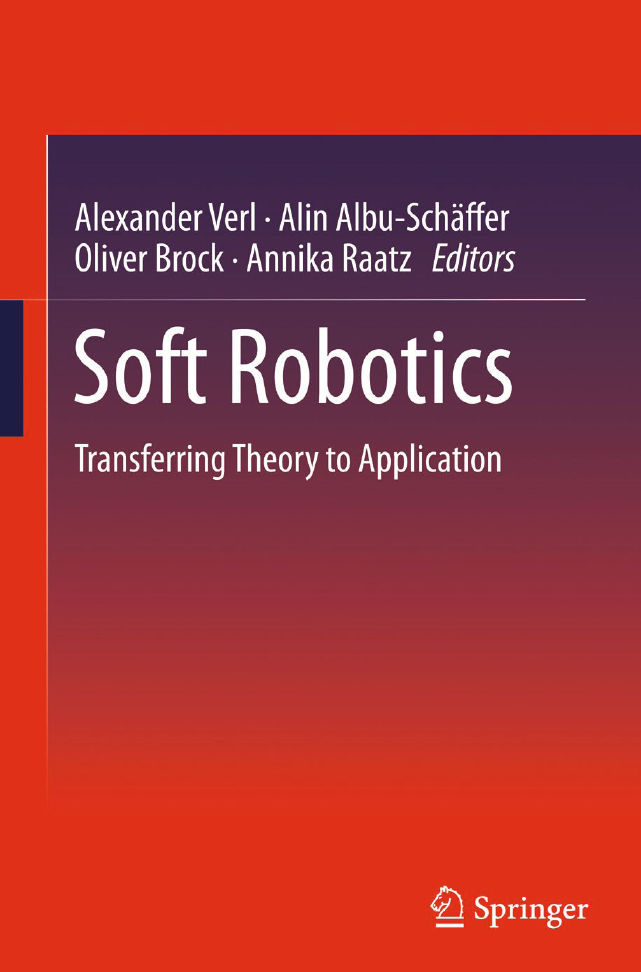

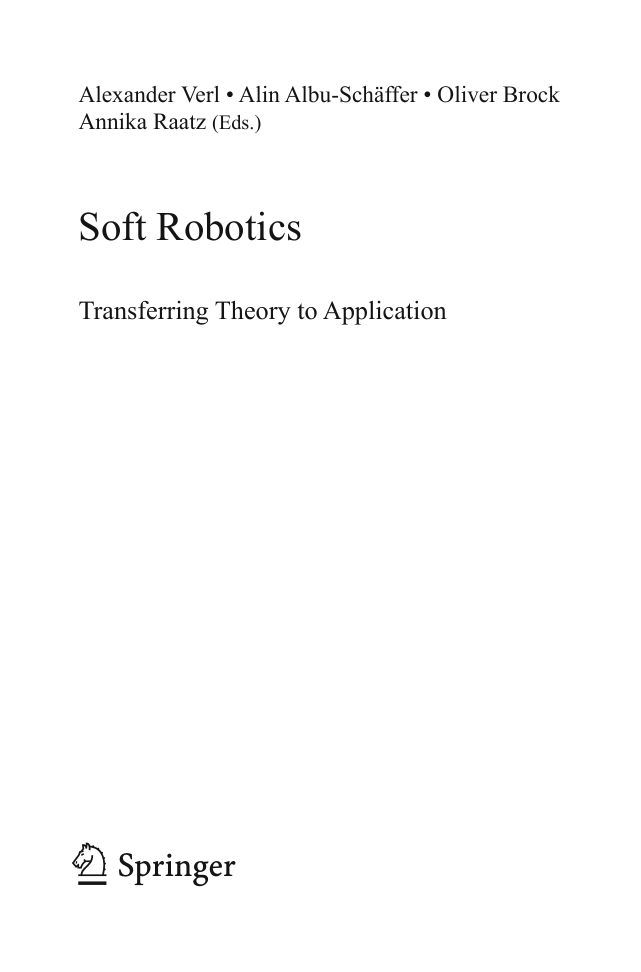

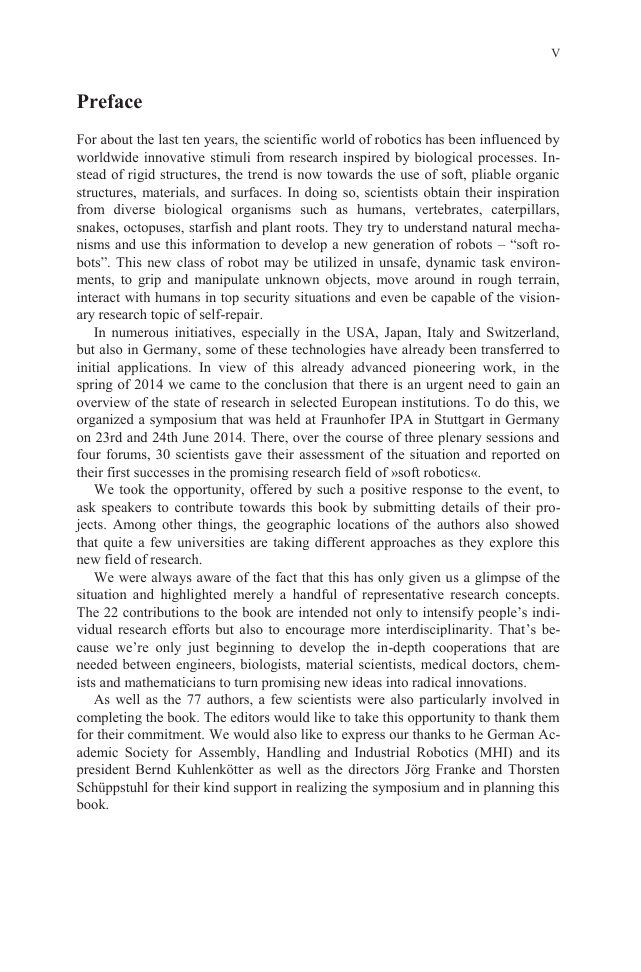
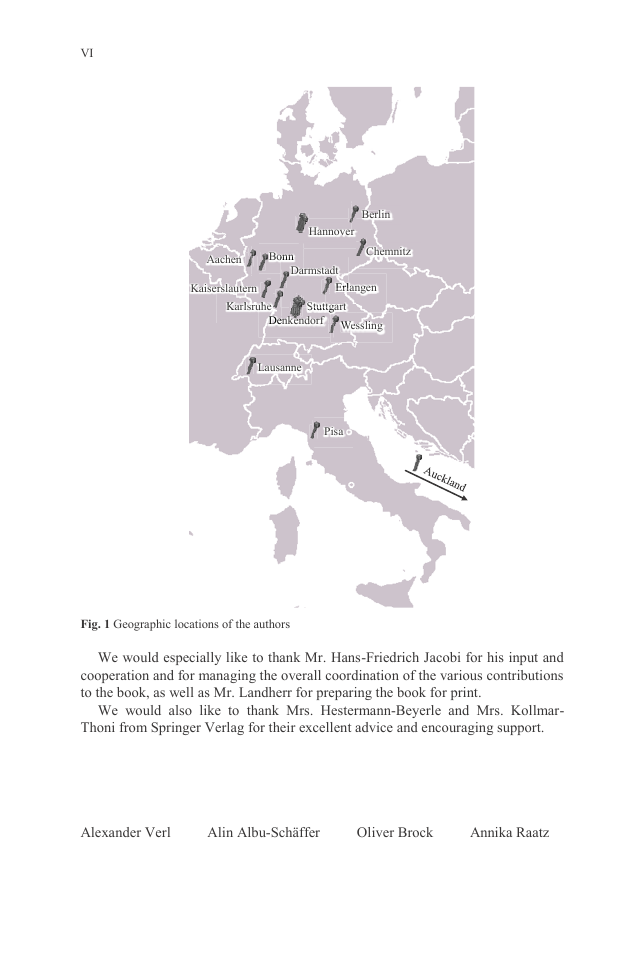
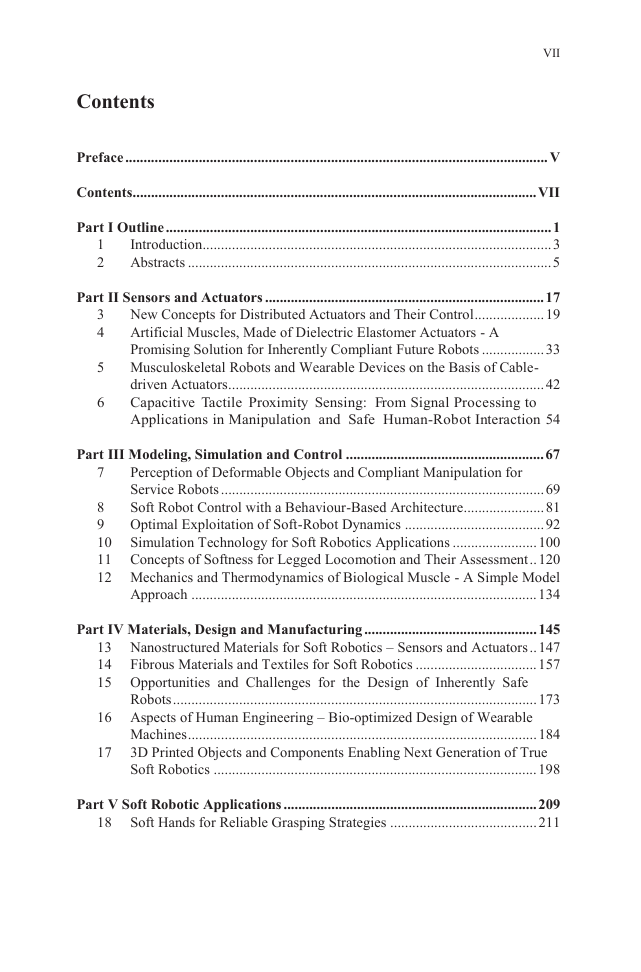
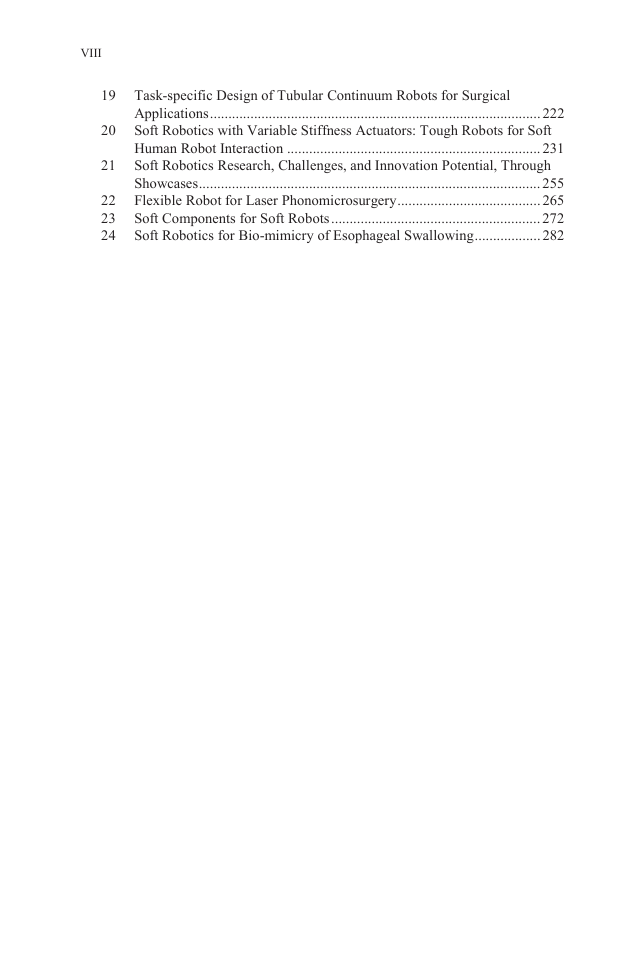








 2023年江西萍乡中考道德与法治真题及答案.doc
2023年江西萍乡中考道德与法治真题及答案.doc 2012年重庆南川中考生物真题及答案.doc
2012年重庆南川中考生物真题及答案.doc 2013年江西师范大学地理学综合及文艺理论基础考研真题.doc
2013年江西师范大学地理学综合及文艺理论基础考研真题.doc 2020年四川甘孜小升初语文真题及答案I卷.doc
2020年四川甘孜小升初语文真题及答案I卷.doc 2020年注册岩土工程师专业基础考试真题及答案.doc
2020年注册岩土工程师专业基础考试真题及答案.doc 2023-2024学年福建省厦门市九年级上学期数学月考试题及答案.doc
2023-2024学年福建省厦门市九年级上学期数学月考试题及答案.doc 2021-2022学年辽宁省沈阳市大东区九年级上学期语文期末试题及答案.doc
2021-2022学年辽宁省沈阳市大东区九年级上学期语文期末试题及答案.doc 2022-2023学年北京东城区初三第一学期物理期末试卷及答案.doc
2022-2023学年北京东城区初三第一学期物理期末试卷及答案.doc 2018上半年江西教师资格初中地理学科知识与教学能力真题及答案.doc
2018上半年江西教师资格初中地理学科知识与教学能力真题及答案.doc 2012年河北国家公务员申论考试真题及答案-省级.doc
2012年河北国家公务员申论考试真题及答案-省级.doc 2020-2021学年江苏省扬州市江都区邵樊片九年级上学期数学第一次质量检测试题及答案.doc
2020-2021学年江苏省扬州市江都区邵樊片九年级上学期数学第一次质量检测试题及答案.doc 2022下半年黑龙江教师资格证中学综合素质真题及答案.doc
2022下半年黑龙江教师资格证中学综合素质真题及答案.doc